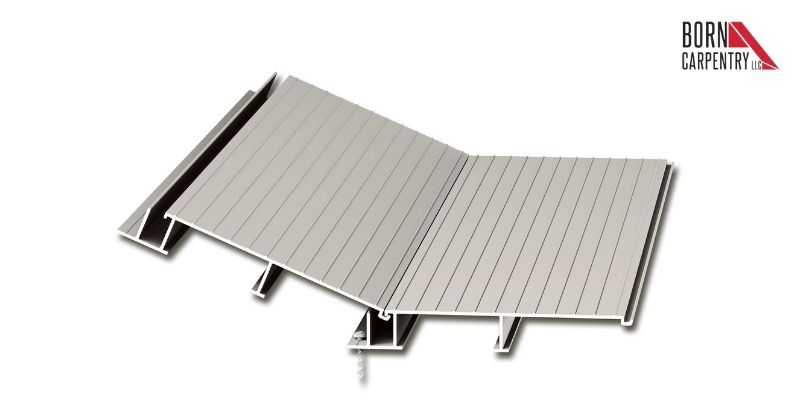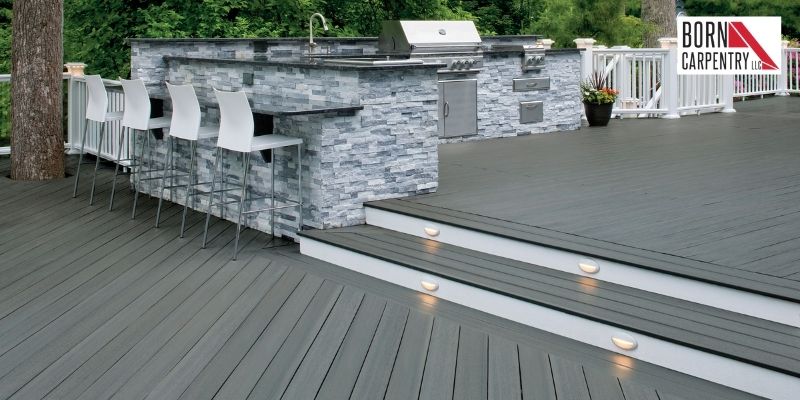Your deck should be properly maintained. You want it to be safe while looking good, too. It is therefore important that you regularly inspect your deck. By assessing your deck regularly, you may find signs of deterioration suggesting that repair work is required.
What Are Some Signs Of Deck Deterioration?
Here are some signs that you need to repair your deck…
Rotting Beams And Wood Support Posts
Rotten wood is never a good sign; If not addressed in time, the rot can cause damage to the structure of your home. It is therefore important that you inspect your deck’s beams and posts every month.
Footings Are Dropping
Your deck’s long-term structural integrity is improved with concrete footings. However, the footings may not be perfect under some circumstances. The concrete may crack if the original deck footings shift because they were poured on unstable soil. This may also result in the dropping of the footings.
Erosion Around The Posts
Erosion can affect both concrete and your deck footings. Soil erosion happens when snowmelt and rain water wash away the soil supporting the footings and deck posts. The exposure of the lower level of the posts may destabilize the deck.
Deck Boards Have Splinters Or Cracks
Usually a splintered or cracked deck board in some decks isn’t an urgent cause of concern. The board can easily be replaced without much hassle. However, it is probably time to do a complete overhaul when the deterioration of the deck is significant.
The Rails Loosen
It is a serious safety hazard when your deck railing is loose. It may not cause the complete collapse of your deck, but it needs fixing or replacing in order to avoid an accident.
Selecting The Right Type Of Decking Material
Each decking material has its unique characteristics with pros and cons. Here are some common decking materials…
1. Aluminum

Talking about durability, aluminum is one of the top materials for decking. It has a sterile aesthetic. Aluminum decking materials are convenient in many ways, and they are 100% recyclable.
Pros:
- Bugs cannot eat it
- Comes in a variety of colors and finishes
- Has superior heat-dissipating properties
- Does not rot, warp, crack, or rust
- Mold and weather resistant
- Lightweight but strong
- The finish will never blister or peel
Cons:
- Does not have the look of hardwood
- The most expensive type of decking material
2. Pressure-Treated Lumber
This decking material is made of natural wood. It is the most popular decking material. Most new decks are made with lumber that is pressure-treated (PT). During its production, it is treated with chemicals to resist rot, fungus, and bugs.
Pros:
- Affordable and easy to source
- Least expensive of all the types of decking materials
- Withstands bugs, fungi, rot, mold, and insects
Cons:
- Concerns with its chemical treatment
- Not stable dimensionally
- Requires fresh coat every few years and power washing annually
- Splits, warps, and cracks with time
3. Composites

Composite is one of the fastest-growing deck materials available on the market today. The makeup of this material is molded plastic and wood fiber.
Pros:
- Available in a variety of textures and colors
- Does not need to be refinished
- Does not require regular maintenance
- Does not split, rot, or warp easily
- Highly durable
Cons:
- Fades and breaks over time
- Has an artificial look
- Mid-range pricing
- Susceptible to moisture
4. Natural Woods
If you want to avoid the chemicals used in treating some decking materials, natural wood is a great alternative option. Some natural woods have tannins and oils, making them naturally resistant to bugs and rot.
Pros:
- Beautiful color
- Naturally resistant to bugs and rot
- Very durable
Cons:
- High price tag
- Requires new stain every few years and power washing annually
5. Plastic
This type of decking material is made from polyethylene and PVC. PVC contains polyvinyl chloride. Similar to natural wood in looks, plastic is 100% recyclable.
Pros:
- Affordable
- Does not rot or decay
- Durable
- Easy to clean
- Its design option is flexible
- Lightweight
- Scratch and mold resistant
Cons:
- Can be slippery
- Can be brittle or crack because of harsh weather
- Difficult to repair
- Sags
How To Properly Maintain Your Deck
Repairing your deck can be very costly. To avoid unnecessary expenses, you must perform regular maintenance tasks. How you schedule your maintenance will depend largely on the type of decking material that you use. What are some things to think about when it comes to deck maintenance? For starters, moisture can be trapped beneath your outdoor furniture, rugs, and planters causing premature deterioration of your deck. Items like these should be moved around once in a while to avoid rot and insect attacks. With wooden decks, you must paint and seal them every few years– even pressure-treated wood, too! Finally, ensure that drink and food spills are thoroughly wiped off your deck. Having food residue on your deck can attract insects.
Conclusion
Each decking material has its pros and cons. The right material for your deck will depend on factors such as aesthetic preference, your budget, and your backyard entertainment needs. Born Carpentry knows all about decks and can help you figure out when it’s time to repair or replace your deck, or help you plan a new deck addition to your house.





